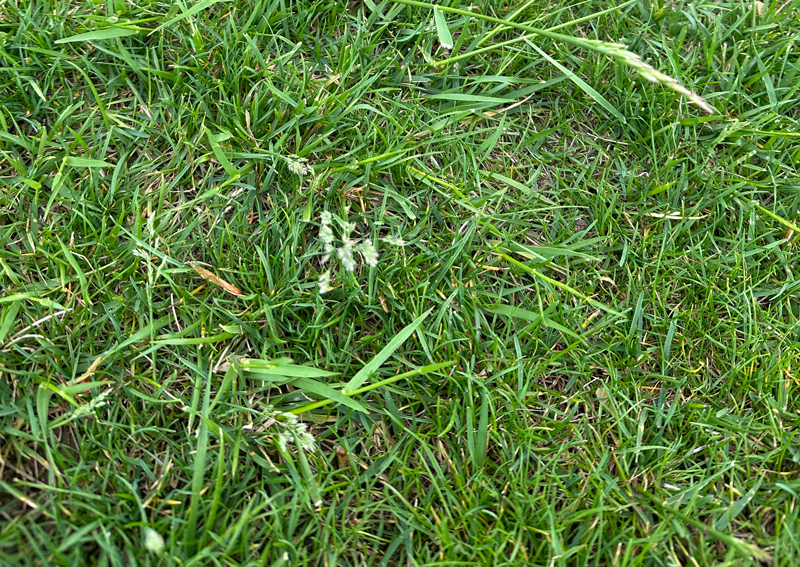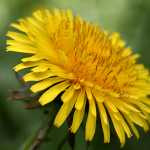Weeds in Grass? Or Kentucky Bluegrass Going to Seed?
Some Turf Varieties Go to Seed Annually
We received a great question from a customer recently: “I’m looking at my lawn. Are these weeds in grass here?” (with this accompanying picture).

As you can see, there are certainly some growths that don’t look like grass blades. After Round 2 of the year in Paramount’s 6-Step Lawn Fertilization Program, no one wants weeds in grass during this period of spring growth.
But what’s pictured above aren’t weeds! This customer’s turf is Kentucky bluegrass, which goes to seed for a few weeks each year. It shows that their turf is healthy and on its expected growth cycle. (And if we were to “get rid of it,” the turf would die!).

Kentucky Bluegrass, Not Weeds in Grass
In the Cincinnati region, we have four common types of turf:
- Kentucky bluegrass
- Perennial ryegrass
- Turf-type tall fescue
- Fine fescue
All of these turf varieties can go to seed, and there’s no real way to prevent it. Some say sharpening mower blades and cutting every five to ten days can help reduce the flower stalks, but you shouldn’t lower the blades.
Once soil temperatures reach 70-80 degrees in June, Kentucky bluegrass will stop seeding and return to its normal appearance.
This flowering and seeding activity is natural, but it also won’t help your grass re-seed itself. Grass seed takes about four months to reach maturity– and there’s no way you’ll let it grow undisturbed for that long. If you have patchy grass, you’ll want to learn more about aeration and overseeding.
Learn More about Kentucky Bluegrass
We found this great video from Ryan Knorr and his experience growing Kentucky bluegrass over the years. If you have bluegrass (or are thinking of growing it), it’s well worth the five minutes.
Kentucky Bluegrass Facts
Here are some quick facts about Kentucky bluegrass, if you don’t have time for the video:
- It withstands our winters really well
- It doesn’t like shade
- It needs adequate irrigation in the summer. It’s drought tolerant, but it goes dormant (brown!) in the heat
- Because it spreads by seeds and rhizomes, bluegrass usually has a thick appearance and recovers from stress fairly well
- It’s soft on bare feet
- It looks best when cut low
Have questions about your Cincinnati lawn? Contact us. Paramount Lawn + Landscape wants you to love your lawn! And for more information, check out our Lawn Fertilization Resources.







